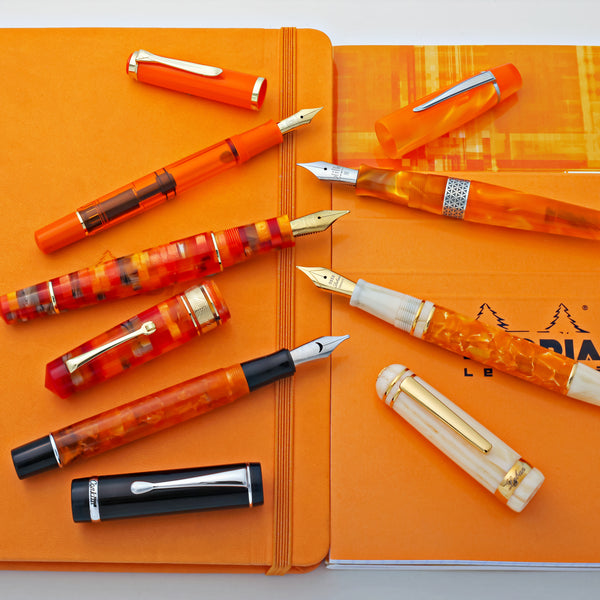Bottled Inks
Traditionally, fountain pen ink came in bottles or ink wells, often with only a few color options. Today, writers have the luxury of selecting from a wide array of colors made from around the world.
Ink bottle sizes, shapes, and materials vary, depending on the manufacturer. Some bottles are small, holding only 10-20ml of ink. Others provide more value with a higher volume of 50-90ml. Some ink bottles are made of economical plastic while others are glass and look like delicate desk ornaments.
Pros: Wider range of ink color options, best value of cost per mL, bottles themselves can be desk art
Cons: Filling could be messy, glass bottles are not travel friendly
Since there are so many different inks to try, some fountain pen enthusiasts prefer ink samples instead of buying a full bottle. Samples are usually contained in a 5ml test tube vial and provide 2-3 fill-ups of ink.
To fill your fountain pen with ink from a bottle or ink sample, you will need a device to draw and contain the ink. For most cartridge/converter fountain pens, that tool is the converter. This device operates like a syringe, sucking ink up through the nib to be stored in the converter’s reservoir.
Alternatively, some fountain pens are self-filling and do not require a separate part to fill with bottled ink. Piston-filling, vacuum-filling, and eyedropper fountain pens have a higher ink capacity than cartridge/converter pens and do not accept ink cartridges.
If you need help on how to fill your fountain pen, we suggest you check out this how-to guide (with videos) here.





